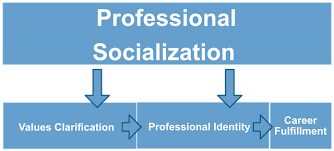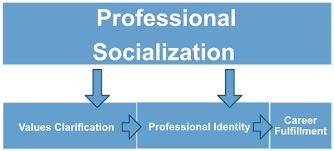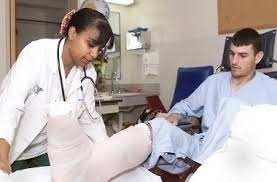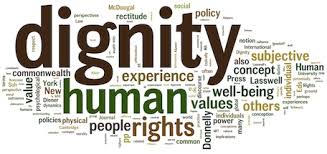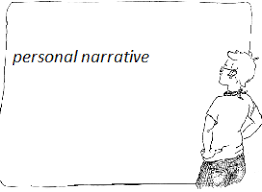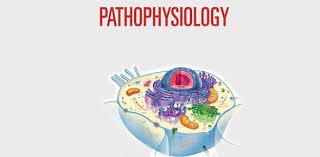
Pathophysiology
Order Instructions:
Students are to choose one (1) of the case studies available (see LEO) and answer the associated questions. The assignment is to be presented in a question/answer format, and not as an essay (i.e. no introduction or conclusion). Each answer has a word limit; each answer must be supported with citations. Students should follow the recommended formatting for academic papers http://students.acu.edu.au/308971 Students must provide in-text referencing and a reference list must be provided at the end of the assignment.
SAMPLE ANSWER
- 1 In relation to your chosen patient, discuss the pathophysiology of their condition and using evidence based practice explore current treatment options for your patient’s condition, include any pharmacological and non-pharmacological considerations.
This is a common operation procedure performed in the U.S. Though practiced for along period of time, the procedure faces numerous controversies especially on post-surgery complications. Tonsillectomy refers to the surgical removal of palatine tonsils. It is among the most common surgical procedures performed (McCance Et al., 2014)
Pathophysiology of the disease; tonsils are 3 tissue masses namely the lingual tonsil, pharyngeal tonsil and the palatine tonsil. These tonsils ate lymphoid tissues which are covered by cryptic invagination respiratory epithelium. Tonsils play an important role in immunity process. They produce lymphocytes and synthesize immune-globins. However, diseased tonsils are usually less effective because they are associated with reduced transportation of antigen, reduced production of the antibody and recurrent bacterial infection. This normally causes the tonsils to enlarge resulting to systems complication such as Difficulty in breathing, difficulty swallowing and disrupted breathing especially when the patient is sleeping. In some cases, there could be cancerous tissue on one or all tonsils. This could lead to recurrent bleeding from the blood vessels neighboring the tonsils surface (Tollefson, 2012).
Tonsillectomy is normally recommended especially if there are frequent episodes of tonsillitis such as more than seven episodes per year, or more than three episodes per year. It is also recommended if the bacterial infection does not improve with antibiotic therapy. However the process is not usually smooth sailing but also associated with risks and complications like other surgeries. For instance, some patients may react to anesthetics. Anesthesia is used to make the patient relax during the surgery, but some studies have reported minor complications such as headache, nausea and soreness of the muscle. Swelling of the tongue and the soft palate could cause breathing difficulty. Bleeding may occur during the process and may also occur during healing processes. This implies that further treatment is required and the patient longer hospital stays (McCance Et al., 2014).
For patients presenting airway obstruction or hemolytic anemia, they are treated using corticosteroids. This pharmacological therapy has been indicated to be effective in reducing fever, pharyngitis and mononucleosis (MN) which could be infectious. Antibiotic treatments are normally used for secondary bacterial infection. Ampicillin and related compounds should be avoided where MN is suspected because it causes generalized popular rash. Cephalexin reacts similarly. The evidence based recommended antibiotic is the antistreptococcal antibiotics e.g. erythromycin. Antibiotics should only be administered is there is an indication of bacterial etiology. The etiology is presented by presence of tonsillar exudates, fever, leukocytosis and GABHS. The bacterial infections are indistinguishable and may require culturing of the bacteria. Administering of penicillin for 10 days is recommended (Martini, Nath & Bartholomew, 2014).
The non-pharmacological therapy entails patient education; patient is requested to complete medications even where the symptoms have been relieved. It is also important for the patient to take a lot of fluids, particularly water and ice pops. Patient is advised to take foods which are easy to swallow. The patient should avoid crunchy and over spiced food. The patient is also required to take ample rest. They should avoid strenuous activity until one is able to resumes normal diet and pain is relieved (Jarvis, Forbes & Watt, 2012).
| Q. 2 Critically discuss four (4) components of the PACU discharge criteria outlined in the Aldrete Scale. Utilize the scale provided on LEO as a resource in your case study. |
The main goal for postoperative care is to mitigate complications and to promote rapid healing for surgical incision. The care involves assessment, diagnosis of the post-surgery events, intervention and evaluation of the patient’s outcome. The extent of PACU is highly influenced by the type of surgery and the patients’ health status at that time. Where post anesthesia complications are identified, patients must be retained in the hospital until their conditions stabilizes (Smedley, 2012). After tonsillectomy and any other type of surgery, the patient is transferred to PACU where anesthesia reversal and other processes are conducted. The amount spend in this care unit depends on the length of surgery, status of the regional anesthesia and the status of the patients consciousness. In PACU, the nurse reports on the patient’s condition when performing an assessment for post-surgery complications (Tamura Et al., 2012).
The patient is only discharged from PACU after she meets the standard discaharge criteria as indicated by Aldrete Scale. This is scales provides scores on patients vital components. Muscle activity must be scored. This includes the ability for the patient to move jaws and muscle extremities with ease either on command or spontaneously. Where all muscle in question move, the item is scored as one, where none muscle extremities moves, then it is scored as 0. It is important to evaluate because nerves and blood vessels could be accidently injured during the process. The earlier the condition is identified the better. The second component is the respiration efficiency (Estes, 2013). In this case study, the patient was assessed if they could breathe deeply with ease, where a score of 2 is given. If the respiratory system is limited or cases of dyspnea are observed, then it is scored as 1, the 0 score is given if there is no spontaneous respiratory activity observed. Postoperative patients are characterized with poor ventilation. The aim is to identify airway obstruction and changes in oxygenation in order to correct it as fast as possible.
The third component is the circulation system. This entails checking the systolic and diastolic systems. This is monitored through the anesthetic state. If the systolic and diastolic pressure seems to be +/- 20% is normal, then a score of 2 is given. BP of +/- 20 % to 50%, the scoring is 1; and if there is alteration of the pressure is more than 50%, the score is zero. Some patients may experience hypoxemia and may require supplementary oxygen. This situation may alter the blood pressure which could result to stroke and ischemic heart attack. Lastly, Consciousness is the most important component of Aldrete assessment (Lopez Et al., 2013; Wilding Et al., 2010). The patient full alertness is indicated by their ability to answer give questions vividly and attentively. Where the patient is considered to be awake, then a score of two is given, if the patient are aroused only their names are called, then they get a score of 1, and score of zero where the auditory stimulation elicit reduced response. This is important to identify conscious complicated and uncomplicated conditions due to reactions to anesthesia medication which could change the patients’ blood pressure, respirations and heart rates (Atlas Et al., 2014).
- 3 Discharge plan
Amy is 20 year old female. She was admitted on October 23rd, 2014. She was suffering from difficulty in breathing and swallowing, fever and insomnia which was diagnosed as tonsillitis. Tonsillectomy was recommended, which she undertook three days ago. Depending with the patient’s condition and the type of surgery, the patient is discharged from PACU to in for an extended stay or to day surgery before a person is discharged to home. According to evidence based practice discharge depends on the patient’s recovery from anesthesia. Before the discharge, the patient must be conscious and mental state is fully returned. The patient should manifest stable vital symptoms including respiratory, cardiovascular system, excessive bleeding have stopped and the muscular systems. The pain should remain under control, the baseline temperature at normal level. Patient could stay longer at the PACU if there is nausea and vomiting. Additionally the patient must score nine out of possible ten PAS. If patients PAS score is below the standardized care, the chief anestheologists can be consulted. Before discharge, the RN must obtain verbal or written order from the physician; the orders must be recorded (Atlas Et al., 2014).
Preparation for discharge is an ongoing process even throughout the surgical processes. At the time of discharge, the nurse should ensure that the care providers know how to care for would sites and dressing systems including recommendations for vital daily activities during bathing. The reaction to the medication provides should be avoided and alternative drugs described or enhanced (Lewis Et al., 2013). The patient is prohibited to take physical activities such as returning to work, driving and exercises. Other important restrictions and modification should be supported. The instructions should be written instructions. Increasingly people are discharged from the ospital with many care demands, the care provider who receives the nurse should take care to protect the wounds drains, the wound dressing and other necessary traction apparatus (Tamura et al, 2011).
Social workers contact the family to inform them on discharge plan, Provides transportation to home and arranges medical supplies. Nurses ensure that patients care givers are informed on date of discharge. Provides the care giver and patient discharge list which contain treatment instructions, nutrition plan, physical activity recommended and scheduled appointment. Nurse should ask the patient care giver to verbalize the information to evaluate if they understand the instructions (Davis Et al., 2011). Documentation of the transfer is done and the patient is discharged from PACU. Sign and date the discharge form and discharge summary is documented. Pharmacist provides drug regime and the dosage. Family care giver advised on dietary modification. Family must make arrangement for care services at home. Family must ensure that the transition is smooth and peaceful. There is need to understand that the patient health is still undergoing recovery and thus need massive support (Atlas Et al., 2014).
References
Atlas, S., Matthews, J. R., Fritsvold, E., & Vinall, P. E. (2014). Social implications of chronic illness & disability. San Diego, CA: Bridgepoint Education, Inc.
Estes, M.E.Z. (2013). Health assessment & physical examination (5th ed.). Clifton Park, NY: Delmar.
Davis, G., Cox, E., Wolfe, R., & Becker, C. (2011). Cutaneous Capnography in the PACU: Immediate Assessment of Respiratory Status Emerging From Anesthesia. Journal Of Vascular Nursing, 29(2), 93. doi:10.1016/j.jvn.2011.04.009
Jarvis, C., Forbes, H., & Watt, E. (2012). Jarvis’s Physical Examination & Health Assessment (Australian and New Zealand ed.).St. Louis, Missouri: Elsevier Saunders.
Lewis, E., Craig, M., & Johnson, L. (2013). Use of the Pain Assessment Behavioral Scale (PABS) in PACU. Journal Of Perianesthesia Nursing, 28(3), e47-e48. doi:10.1016/j.jopan.2013.04.137
Lopez, M., Bellarmino, G., & Viellette, E. (2014). Early Assessment and Prevention of Skin Breakdown in the Post Anesthesia Care Unit (PACU). Journal Of Perianesthesia Nursing, 29(5), e34. doi:10.1016/j.jopan.2014.08.114
Martini, F. H., Nath, J. L., & Bartholomew, E. F. (2014). Fundamentals or Anatomy & Physiology (9th ed.). California: Pearson.
McCance, K., Heuther, S., Brashers, V., & Rote, N. (Eds.). (2014). Pathophysiology: The biologic basis for disease in adults and children (7th ed.). St. Louis: Mosby Elsevier
Smedley, P. (2012). Patient Risk Assessment in the PACU: An Essential Element in Clinical Decision Making and Planning Care. British Journal Of Anaesthetic And Recovery Nursing, 13(1-2), 21-29. doi:10.1017/s1742645612000174
Tollefson, J. (2012). Clinical psychomotor skills: Assessment tools for nursing students (5th ed.). South Melbourne: Cengage Learning.
Tomura, H., Yamamoto-Mitani, N., Nagata, S., Murashima, S., & Suzuki, S. (2011). Creating an agreed discharge: Discharge planning for clients with high care needs. Journal of Clinical Nursing, 20(3/4), 444-453.
Wilding, J., Manias, E., & McCoy, D. (2010). Pain Assessment and Management in Patients After Abdominal Surgery From PACU to the Postoperative Unit. Journal Of Perianesthesia Nursing, 24(4), 233-240. doi:10.1016/j.jopan.2009.03.013
We can write this or a similar paper for you! Simply fill the order form!




